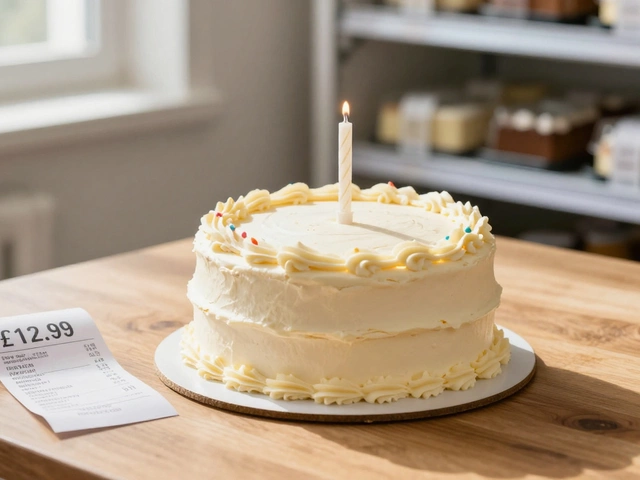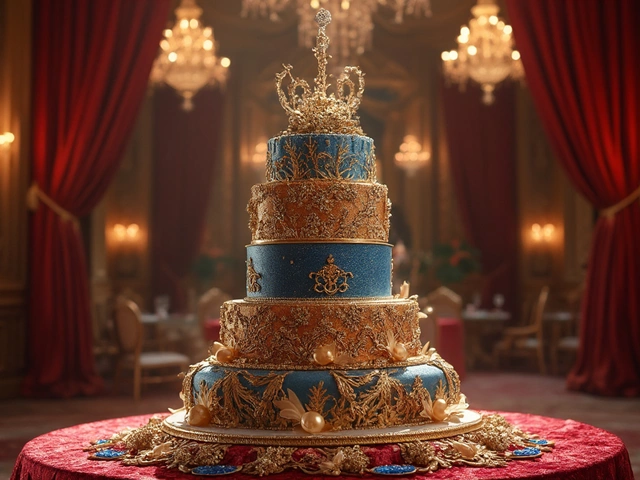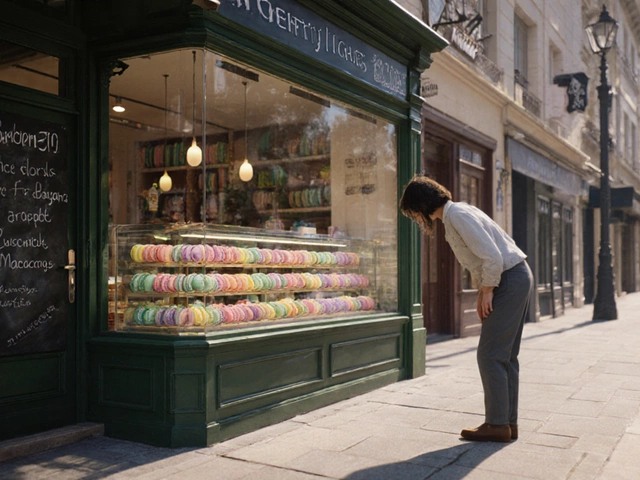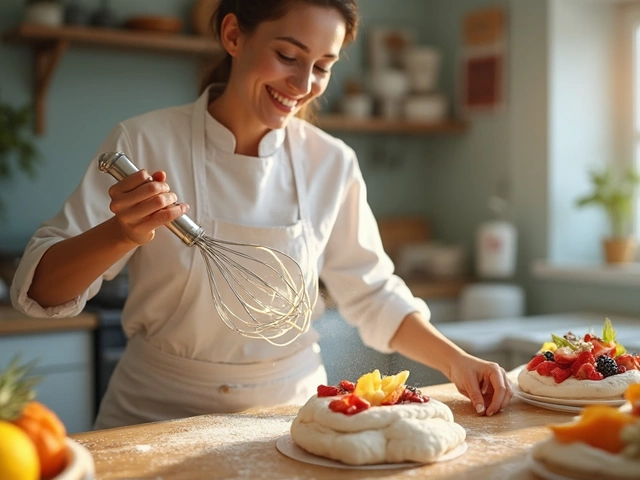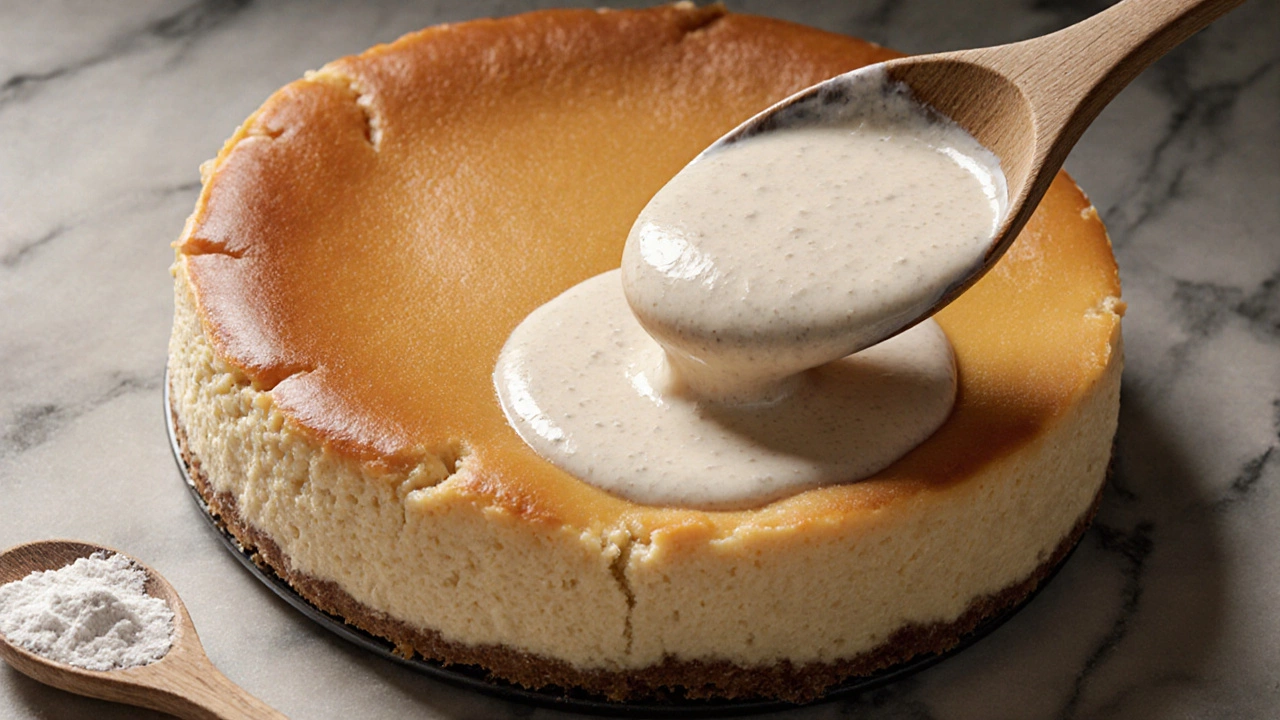
Cheesecake Flour Calculator
Optimal Flour Amount Calculator
Flour prevents cracking and sinking by stabilizing egg proteins. Use the calculator to find the perfect amount for your cheesecake size.
Why flour matters:
Flour stabilizes egg proteins to prevent cracks and sinking. It creates a firm, sliceable texture without changing flavor.
Recommended Flour Amount:
Tip: For gluten-free options, use 1 tbsp cornstarch instead. Exceeding 2 tbsp flour may make texture too dense.
Ever opened your oven to find a cheesecake that cracked, sank in the middle, or felt too dense? You followed the recipe exactly-cream cheese, sugar, eggs, vanilla-but something still went wrong. Then you notice it: a tablespoon of flour tucked in the ingredients list. You wonder, Why is this here? Is it a mistake? A trick? Or does it actually do something important?
The truth? Flour isn’t there to make your cheesecake taste like cake. It’s there to fix a very specific problem: structure.
What Flour Actually Does in a Cheesecake
Traditional New York-style cheesecake is all about richness-thick, creamy, almost custard-like. But that same richness makes it fragile. When you bake it, the eggs expand, the steam rises, and the edges set faster than the center. Without something to hold things together, the center can collapse, or the surface can crack like dry mud after a drought.
Flour acts like a gentle net. It doesn’t add flavor. It doesn’t make it chewy. It just gives the batter a little more body so it can hold its shape as it bakes. Think of it like the difference between a loose omelet and one with a pinch of flour stirred in-it holds together better without turning rubbery.
Most recipes call for just 1 to 2 tablespoons of all-purpose flour per 9-inch cheesecake. That’s not enough to turn it into a cake. It’s barely enough to register on your tongue. But it’s enough to stabilize the egg proteins as they set.
Flour vs. Cornstarch vs. Sour Cream: The Trade-Offs
You might have seen other stabilizers in cheesecake recipes: cornstarch, sour cream, or even heavy cream. So why pick flour over them?
- Flour gives a slightly firmer texture. It’s reliable. It’s what you find in classic recipes from the 1950s through today. It doesn’t change the flavor, and it’s easy to find.
- Cornstarch creates a silkier, more tender crumb. It’s often used in no-bake cheesecakes or when you want extra smoothness. But it can make the texture a little gummy if you use too much.
- Sour cream adds tang and moisture. It helps prevent cracks by lowering the baking temperature slightly and adding fat that slows down protein tightening. But it doesn’t add structure the way flour does.
Here’s what bakers in Brighton and Brooklyn have learned through trial and error:
| Stabilizer | Texture Result | Best For |
|---|---|---|
| Flour (1-2 tbsp) | Firm, sliceable, slight bounce | Classic baked cheesecakes, transportable desserts |
| Cornstarch (1-2 tbsp) | Softer, silkier, less spring | Smooth textures, no-bake versions |
| Sour cream (1/2 cup) | Moist, tangy, less prone to cracking | Creamier styles, dessert bars |
| None | Delicate, custard-like, prone to cracks | Expert bakers with perfect oven control |
Most home bakers don’t have a professional oven that maintains perfect, even heat. Flour is the quiet hero that makes your cheesecake survive the real world-your oven’s hot spots, your timing mistakes, your kids asking for a slice before it’s cooled.
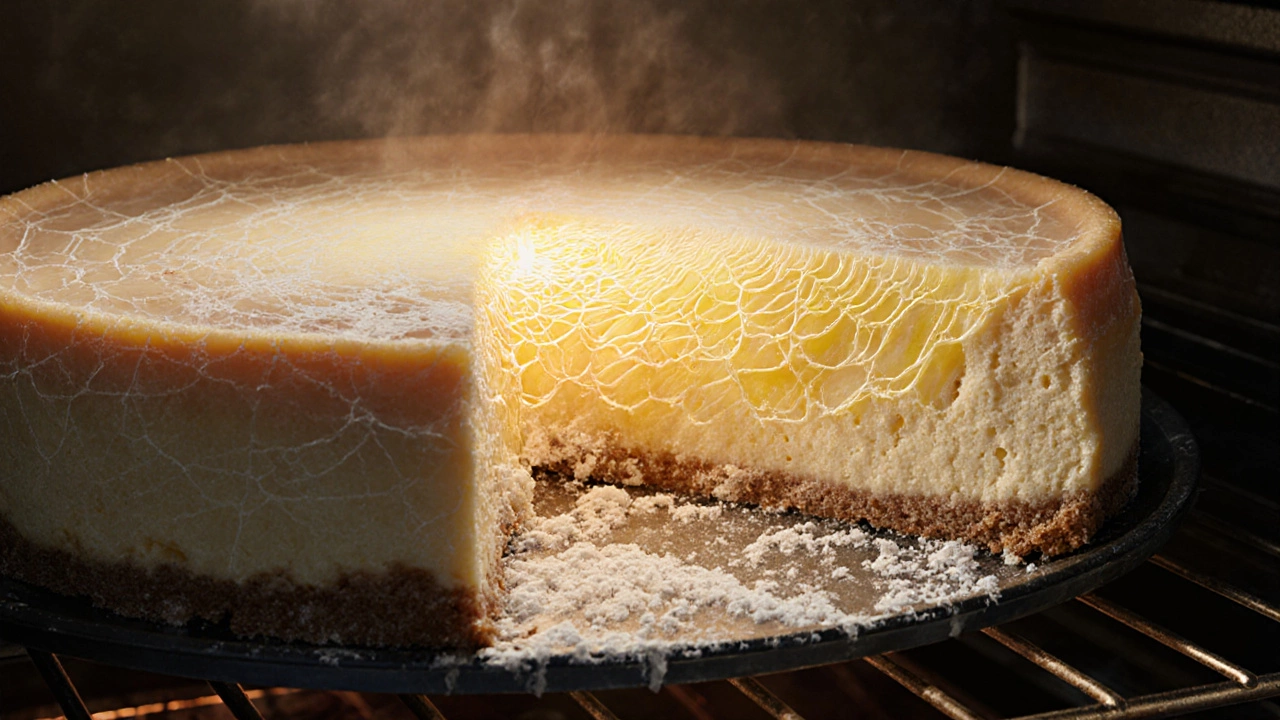
What Happens If You Skip the Flour?
You can absolutely make a delicious cheesecake without flour. But you’ll need to compensate.
Without flour, the batter is more liquid. That means:
- It’s more likely to crack on top as it cools and contracts.
- The center may sink slightly after baking, leaving a dip that looks like a crater.
- It becomes harder to slice cleanly-especially if you’re serving it cold.
Some professional bakers skip flour entirely and rely on a water bath (bain-marie) to bake the cheesecake slowly and evenly. That works-but it’s messy. You’re dealing with water leaks, longer bake times, and more cleanup. For most people, a tablespoon of flour is the easier win.
There’s also a myth that flour makes cheesecake taste like cake. It doesn’t. If you taste a floury cheesecake, you either used too much (more than 3 tablespoons) or didn’t mix it in well. A well-made flour-stabilized cheesecake tastes like cream cheese, sugar, and vanilla-with a clean, smooth finish.
How to Use Flour Correctly
Don’t just dump it in. Here’s how to get it right:
- Whisk the flour with the sugar before adding it to the cream cheese. This prevents lumps.
- Beat the cream cheese until completely smooth before adding anything else. Lumpy cream cheese + flour = gritty texture.
- Add the flour slowly while mixing on low speed. Don’t overmix after adding the eggs-just until combined.
- Use all-purpose flour. Don’t substitute with almond flour, coconut flour, or gluten-free blends unless you’re adjusting the whole recipe. Those flours absorb liquid differently and can dry out the cheesecake.
Pro tip: If you’re worried about flour making the texture too dense, try reducing the flour to 1 teaspoon and adding 1 extra egg yolk. That gives you the stability without the slight firmness.
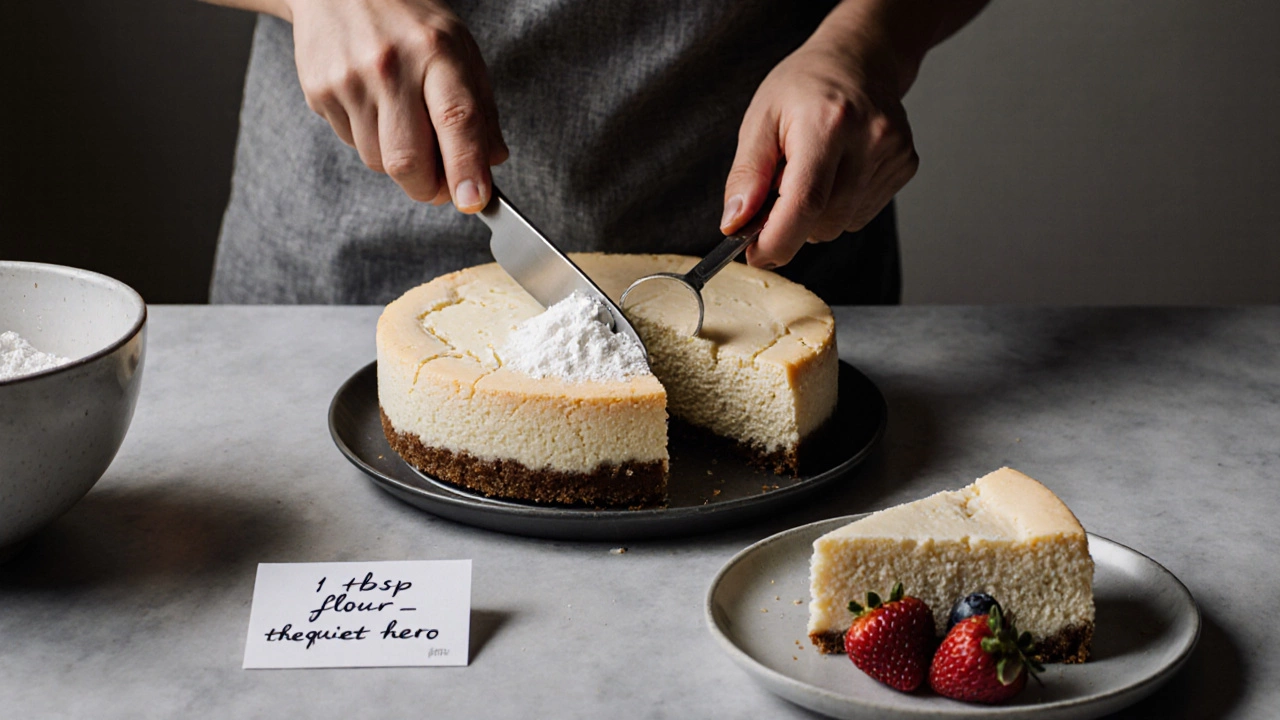
Who Should Skip the Flour?
There are times when flour isn’t needed:
- You’re making a no-bake cheesecake-it sets in the fridge, not the oven.
- You’re using a water bath and have perfect oven control.
- You’re going for a ultra-light, custard-style cheesecake (like Japanese soufflé cheesecake), where airiness is the goal.
- You’re baking for someone with a gluten intolerance-then use cornstarch or arrowroot instead.
But if you’re making a classic baked cheesecake for a birthday, holiday, or potluck? Flour is your silent partner. It doesn’t shout. It doesn’t add flavor. But it makes sure your dessert looks as good as it tastes.
Final Thought: It’s Not About Taste. It’s About Trust.
People add flour to cheesecake not because they think it’s traditional, but because they’ve learned from experience. A cracked cheesecake isn’t just ugly-it feels like a failure. Flour doesn’t guarantee perfection, but it gives you a safety net.
Think of it like wearing a seatbelt. You might never need it. But when things go wrong, you’re glad it’s there.
Next time you see flour in a cheesecake recipe, don’t skip it. Trust it. It’s not there to change the flavor. It’s there to make sure your effort doesn’t collapse.
Does flour make cheesecake taste like cake?
No. Flour doesn’t add flavor. It only helps the cheesecake hold its shape during baking. A well-made cheesecake with flour still tastes like rich cream cheese, sugar, and vanilla-just with a firmer, more reliable texture.
Can I use gluten-free flour instead?
Not directly. Gluten-free flour blends often contain gums and starches that behave differently. They can make the cheesecake gummy or dry. If you need gluten-free, use 1 tablespoon of cornstarch or arrowroot powder instead-it’s a more reliable substitute.
Why does my cheesecake crack even with flour?
Cracks usually happen from overbaking or rapid cooling. Flour helps prevent sinking, but not cracking. To avoid cracks, bake until the edges are set but the center still jiggles slightly. Turn off the oven, crack the door, and let it cool slowly inside for an hour.
Is flour necessary for no-bake cheesecake?
No. No-bake cheesecakes set in the fridge using gelatin or whipped cream, not heat. Flour isn’t needed here-it won’t help and might make the texture grainy.
How much flour should I use for a 9-inch cheesecake?
Use 1 to 2 tablespoons of all-purpose flour. More than that can make the texture heavy. Start with 1 tablespoon if you’re unsure-it’s enough for stability without changing the feel.

